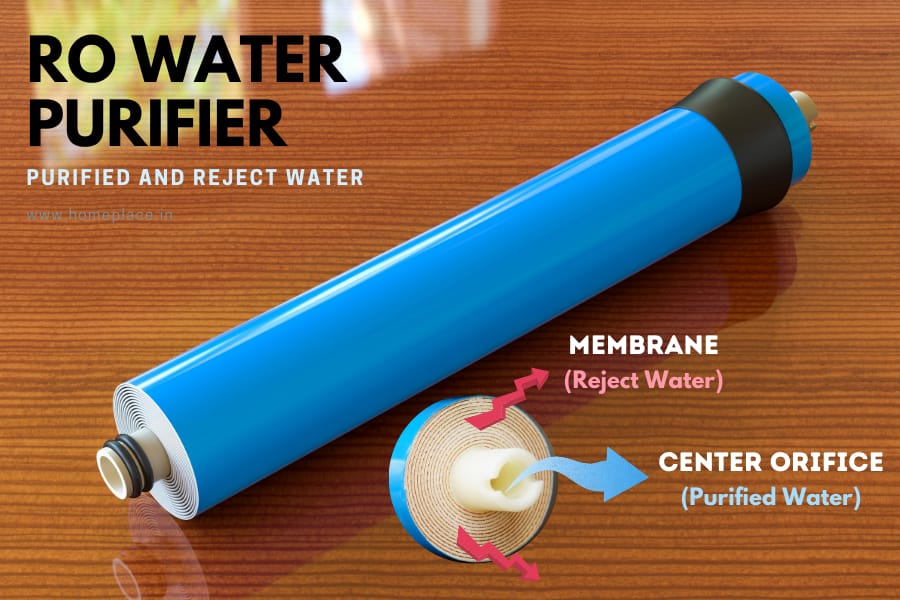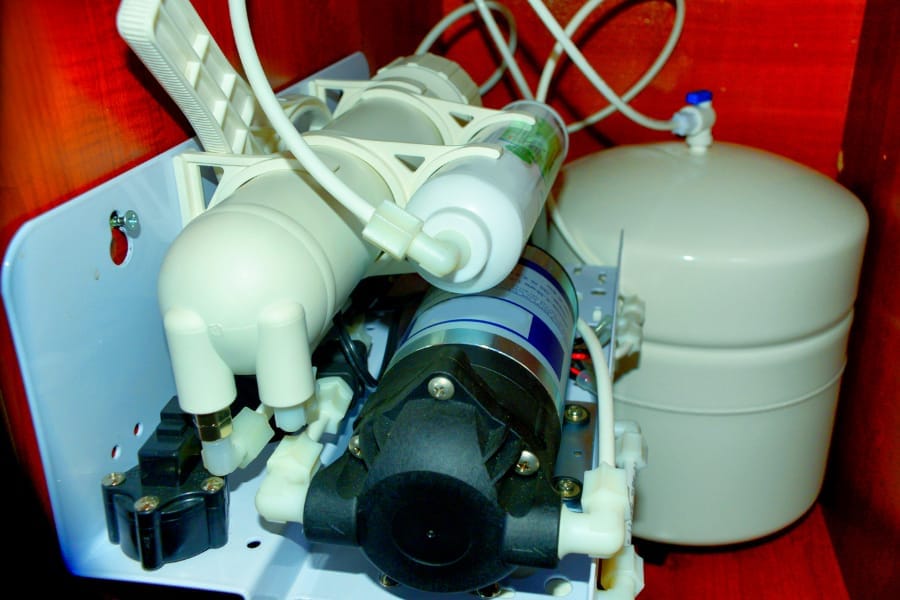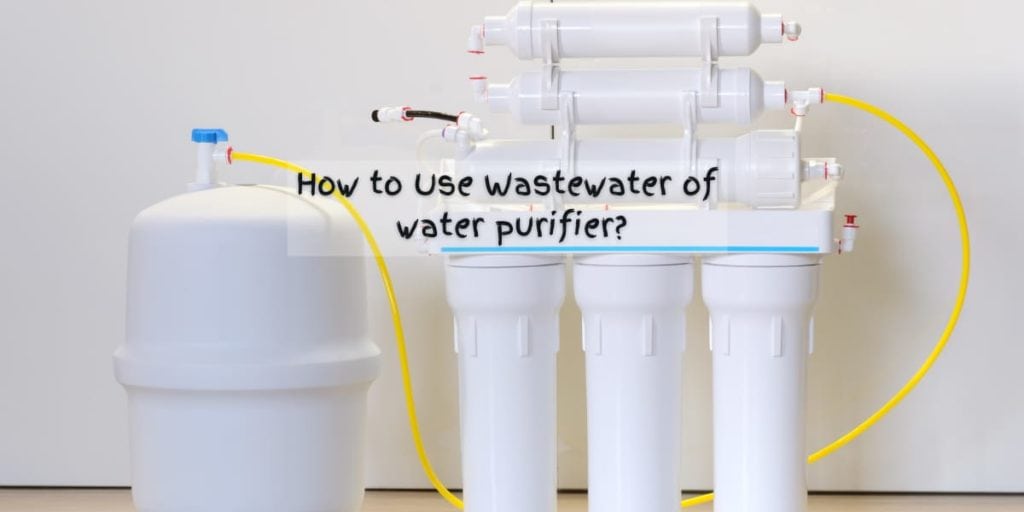When water passes through the RO membrane to remove contaminants and sediments like salts and dirt to provide use fresh water. A fair amount of water is rejected to produce fresh water during the purification process.
So, it would be best to reuse the waste water for different purposes other than drinking. In this article, you will learn why and how much water a water purifier rejects and how you can reuse it.
Why do RO Water Purifiers Waste water?
RO water purifiers are based on membrane technology. A membrane is a filter with a central orifice and layers of PSF, PES, PA, and PEI. While the center orifice is designed to collect purified water, the contaminants get trapped on the layers of the membrane.
A pump pushes the water inside the RO membrane at a uniform flux rate to remove the contaminants. The flux rate is critical for the membrane because if water slows down or stops at some area, all the contaminants won’t be able to flush out. Instead, they will get concentrated on the membrane and block the filtration.

The purified water is stored in the storage tank while the waste stream of water gets drained out with all the contaminations and sediments. The best water purifiers are efficient in water usage and lower the quantity of waste water.
How Much Is Water Wasted in RO Water Purifier?
The amount of waste water from the RO water purifier depends on the water hardness and the condition of the RO membrane. Under normal conditions, a water purifier uses 3-4 liters of water to produce 1 liter of purified water. The rejection rate is increased with a higher hardness of the water.
Municipal water typically has a hardness of around 200-400 ppm, and normal borewell water can be very hard (beyond 700 ppm) in some areas. Using the municipality-supplied water in the RO water purifier won’t make as much rejected water as borewell water.
After months of operation, the holes on the membrane start getting clogged by the contaminants present in the water. The blocked holes prevent the water filtration process and start rejecting more water. Therefore, it is recommended to replace the membrane and clean the water purifier every year.
How to reduce waste water in RO system?
To reduce waste water generation, you have to minimize the water hardness. First, use a TDS meter to measure the hardness in ppm. If it is beyond 500 ppm, you can use a water softener or a pre-filter arrangement to trap the sediments earlier. However, in this process, the flow rate of water can reduce. Thus, you must clean the filtration system frequently.

Can we reuse the waste water from water purifier?
Yes, you can definitely use waste water from your water purifier for different purposes like washing your clothes and car, watering your plants, flushing the toilet, etc. But, as this water has a high hardness, usually above 1000 ppm, it is unsafe for consumption, and you have to be very careful about it. You cannot use it for cooking or bathing purposes. As this waste water is full of contaminants, it is unsafe. So, use it in a creative way that does not impact your health.

How to reuse RO water purifier’s waste water?
Wasting even a drop of water is not a good practice. But, you can’t avoid installing an RO water purifier as that gives you the cleanest and safest drinking water. Make sure to test the rejected water and know the TDS level before using it. If the TDS is too high, it is not recommended for direct use. Instead, always mix it with normal tap water. Here are some best uses of the waste water from water purifiers-
1. Wash Your Car
It takes 10 to 75 liters of water to wash a single car! That is huge. You can store the waste water from your RO water purifier in a bucket and use it on the day of car washing. If the TDS level of the water is below 1500 PPM, you can wash your car with that water without any worry. If the TDS level is higher, dilute it with tap water.
2. Water Your Garden plants
You can use the waste water to water the plants in your garden. But, beyond 500 ppm of hardness, water is not suitable for gardening purposes. So, dilute it with tap water, check the TDS with a TDS meter and apply it to your plants. First, start with fewer plants and check out how they react to the waste water from water purifiers. You can continue watering plants with that water if you notice good growth.
3. Wash Your Utensils in Kitchen
This is another useful application of the waste water that you can go for. Store the RO waste water in a bucket and use it for cleaning the utensils. You can wash all types of cookware made of glass, steel, ceramic, cast iron, or non-stick materials.
4. Clean the Floors
Using the RO waste water for cleaning the floors of your home is a very creative idea to reuse. If the TDS level is within 2000 ppm, you can use it directly on the floor. Else, you have to dilute it with the normal tap water. However, using high TDS water may leave white stains and salt particles on the floor.
5. Use RO Waste water for Toilet Flushing
Flushing the rejected water into the toilet is another practical use. However, every flush in the toilet requires 3 to 7 liters of water, so you need to store it in buckets. Using RO waste water to clean your toilet will be the best option for reusing without wasting it.
6. Clean the Sewage Pipes
The sewage pipes of your house, especially the ones with the bathroom and kitchen, should be cleaned regularly. Otherwise, they will clog and block the water passage over years of use. Using RO water purifier’s waste water is a great idea to clean the bathroom and kitchen sewage pipes. This hard water removes the stubborn grime and dirt from the pipelines without wasting normal water.
RO water purifiers waste a significant amount of water in the purification process. But, if you follow the above tips to reuse the rejected water, you won’t have to waste it. You should also not forget about the regular servicing of your water purifier.
Related Posts:
